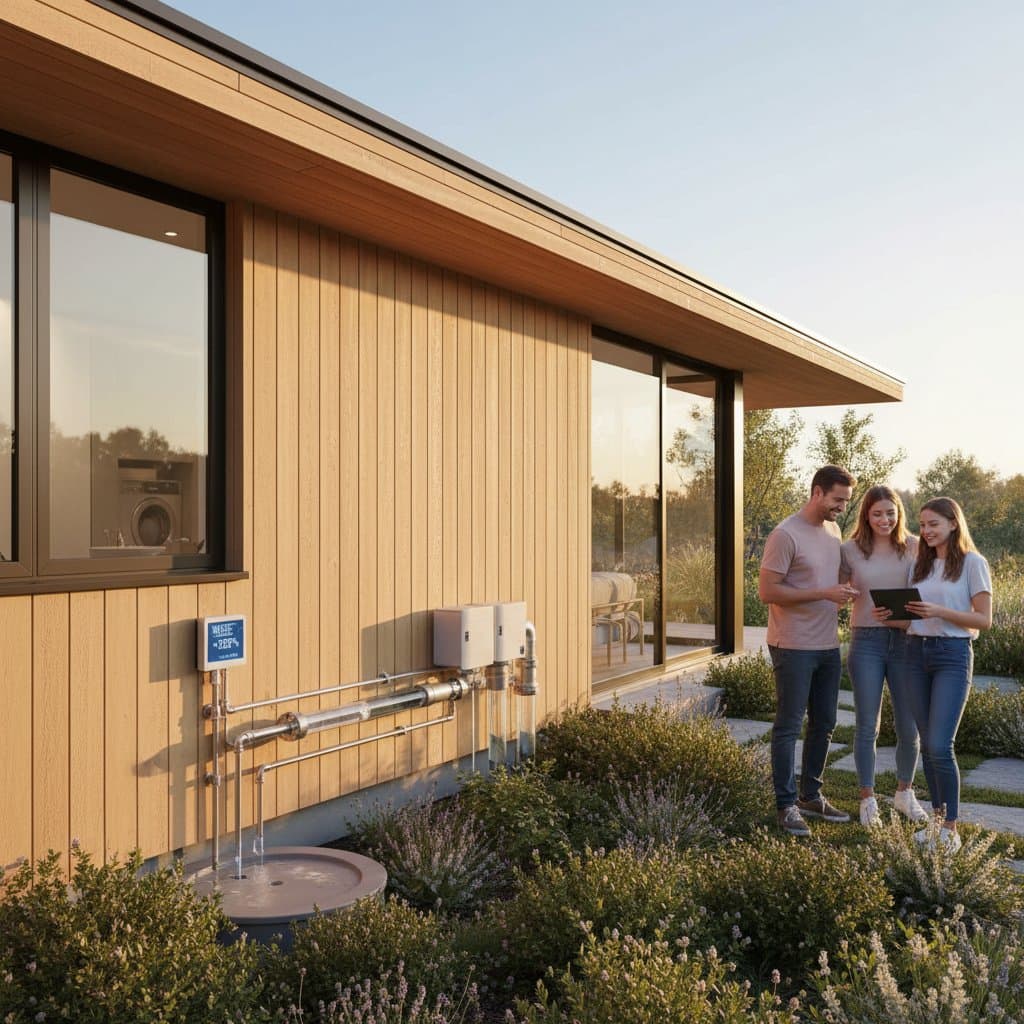Permeable Driveways: Filtering Runoff and Reducing Flood Risk
Homeowners increasingly focus on driveways that manage water effectively amid rising rainfall intensity. Traditional concrete and asphalt surfaces often lead to pooling, erosion, and structural damage by directing water away too quickly. Permeable driveways provide a durable, attractive solution that absorbs rainwater on site, minimizing flood risks while enhancing environmental sustainability. This guide details costs, materials, installation options, and benefits to help you decide if a permeable driveway suits your property in 2025.
Understanding Permeable Driveway Design
Permeable driveways use specialized materials to permit water infiltration directly into the subsoil. Water passes through the surface and filters via layered aggregates, sand, and geotextile fabrics that trap sediments and pollutants. This design mimics natural ground absorption, preventing overload on municipal storm systems.
Common material types include:
- Permeable concrete pavers: Individual blocks with precise gaps allow water to flow between them, offering versatile patterns for aesthetic appeal.
- Porous asphalt: A mix with larger aggregates creates voids for drainage, ideal for high-traffic areas needing a seamless drive surface.
- Gravel-filled interlocking grids: Plastic or concrete grids hold aggregate or grass, suiting low-maintenance, naturalistic looks in suburban or rural settings.
- No-fines permeable concrete: Lacks fine particles to ensure high porosity, providing a solid slab appearance with effective water passage.
Select based on traffic volume, climate, and style preferences. For instance, pavers excel in customizable layouts, while porous asphalt suits smoother vehicle access.
Detailed Cost Analysis for 2025 Installations
Permeable driveway expenses vary by material, driveway size, site conditions, and labor. Expect initial costs 20 to 50 percent higher than standard paving, but these yield savings through lower maintenance and avoided flood repairs. National averages for a 600-square-foot driveway range from $6,000 to $15,000, depending on choices.
Breakdown by material:
- Permeable pavers: $10 to $25 per square foot, including materials and basic installation; premium designs or brands push toward the upper end.
- Porous asphalt: $7 to $15 per square foot; requires certified installers to maintain porosity during compaction.
- Gravel-filled grids: $5 to $12 per square foot; most affordable for expansive areas, with DIY potential reducing labor fees.
- No-fines permeable concrete: $8 to $18 per square foot; balances cost and performance, though specialized mixing adds to prep time.
Additional factors include excavation for a 12- to 18-inch base layer, which costs $2 to $5 per square foot in clay-heavy soils. Sloped sites may need retaining features, adding 10 to 20 percent. Contractors report that in flood-vulnerable regions, these investments recoup via insurance discounts and preserved property integrity.
Mechanisms of Flood Risk Reduction
Permeable driveways mitigate flooding by capturing and dispersing rainwater locally rather than channeling it off-site. This approach eases pressure on overwhelmed sewers and protects home foundations from hydrostatic buildup. In urban areas with impervious surfaces, such installations can cut neighborhood runoff significantly.
Primary protective elements:
- Direct infiltration: Up to 90 percent of rainfall penetrates the surface, replenishing groundwater and averting surface pooling.
- Erosion control: Filtered water emerges slowly underground, stabilizing soil and preventing washouts along driveway borders.
- System relief: By reducing peak flows, these driveways lessen downstream flooding and support aquifer recharge in dry seasons.
- Winter resilience: Sub-surface drainage minimizes ice dams and freeze-induced heaving, extending surface longevity.
Studies from paving experts indicate that permeable systems handle intense storms better than impervious ones, often preventing water intrusion into basements or garages during events that exceed 2 inches of rain per hour.
Essential Maintenance Practices
With routine care, permeable driveways endure 20 to 30 years, matching or exceeding traditional options. Clogging from leaves, dirt, or pollen poses the main threat, so proactive cleaning preserves permeability. Neglect can reduce infiltration rates by half within a few seasons.
Follow this maintenance routine:
- Vacuum or sweep quarterly to clear surface debris, using attachments suited for porous materials.
- Apply a low-pressure rinse annually to flush deeper pores without damaging the structure.
- Inspect after storms for shifted pavers or eroded edges, then realign or refill as required.
- Replenish joint sand or gravel every two years to seal gaps and maintain stability.
For larger properties, annual professional servicing costs $200 to $500 and prevents costly resurfacing. Homeowners in leafy areas benefit from installing adjacent leaf catchers to minimize organic buildup.
Broader Environmental and Visual Advantages
These driveways contribute to healthier ecosystems by filtering urban pollutants like oils and metals before they reach waterways. They lower the urban heat island effect through reduced surface temperatures and promote biodiversity with integrated green elements. Visually, options like colored pavers or grass grids enhance curb appeal, blending functionality with landscape harmony.
Many locales provide incentives, such as $1 to $3 per square foot rebates, for compliant installations that alleviate stormwater burdens. This not only cuts upfront costs but boosts home marketability, with sustainable features increasing resale prices by 5 to 10 percent in eco-aware markets.
Deciding on Installation Approach
Professional installation guarantees optimal performance, as experts evaluate soil percolation, gradient, and load requirements. They layer bases precisely—starting with geotextile over excavated soil, followed by 6 inches of coarse gravel, 4 inches of finer aggregate, and the surface material. This setup ensures even drainage and vehicle support up to 8,000 pounds per axle.
DIY works for simple gravel grid projects under 400 square feet, using rented compactors and levelers. Begin by testing soil drainage: dig a 12-inch hole, fill with water, and measure refill time; rates below 1 inch per hour signal the need for amendments. Consult local codes to confirm compliance with setback and permeability standards before proceeding.
Integrating Permeable Driveways into Property Resilience
A permeable driveway forms a cornerstone of comprehensive water management, pairing effectively with features like permeable patios or bioswales. This holistic strategy safeguards against escalating climate challenges while conserving resources. By choosing permeable options, homeowners secure lasting protection, aesthetic elevation, and environmental stewardship for their landscapes.





